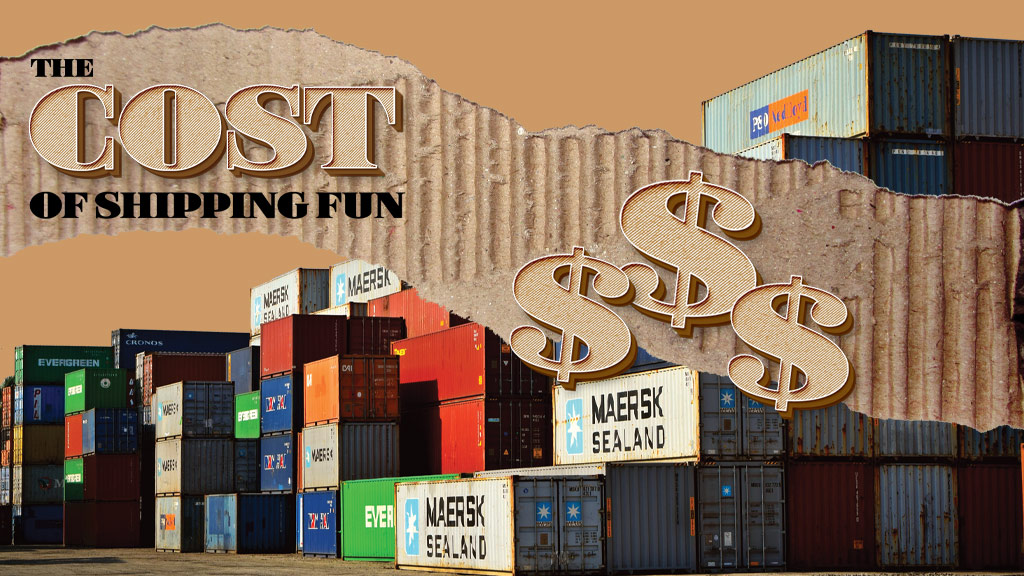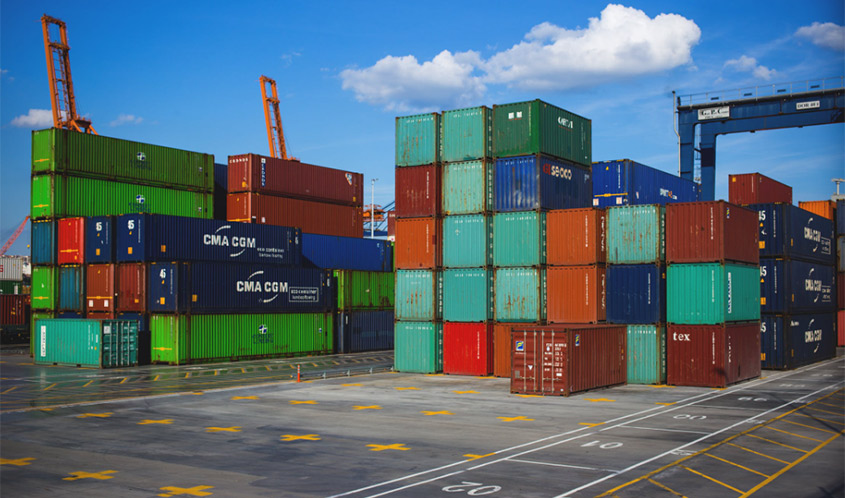
Another year, another crisis.
In what feels like a Groundhog Day scenario that repeats year after year, the U.S. toy industry is facing unique business challenges for the fourth year in a row. Following a trilogy of, yes, “unprecedented” events — including the closure of Toys “R” Us (2018), the on-again/off-again threat of tariffs amid the U.S.-China trade war (2019), and a global pandemic (2020) — this year’s chapter of the saga includes inflation and ripples throughout the global manufacturing and supply chain.
When it comes to the supply chain, shipping has been an issue since manufacturing restarted following the first wave of COVID-19-related closures last summer. The mad dash to get factories running again was immediately met by bottlenecks in several areas, including the availability of containers, trucks, trains, ships, and dock space at the ports. When paired with insatiable consumer demand for new products — the U.S. toy industry sales spiked 27% in the first four months of this year, according to The NPD Group — the result has been a mess.
“It is the worst I have seen in 42 years,” says Isaac Larian, founder and CEO of MGA Entertainment. “First, there were issues with the ports in Los Angeles and Long Beach. Now, it’s the Yantian port in China.”
The port in the Yantian District handles outbound freight in the city of Shenzhen, Guangdong, China — a major manufacturing hub for the global toy industry. A hiccup there creates a global ripple effect.
“We have more than 500 containers sitting there and it’s a peak season,” Larian says. “The cost of transportation is going through the roof, and that’s if you can find a container and a vessel. A 20-foot container to Spain is now $13,000 with $40,000 of goods in it.” [Editor’s note: these numbers have already gone up for some since we went to print.]
This summer, the Toy Book surveyed readers to gauge the direct impact of supply chain issues on their businesses. An overwhelming majority of respondents (92.3%) reported that late or missing shipments have impacted their organizations this year; 38.5% said they have spent more than double on shipping this year; and 30.8% reported that freight costs have tripled. Additionally, 7.7% of respondents said they have had shipments lost at sea. Most respondents have no idea when the situation might get better.
“We aren’t expecting anything to look even remotely normal until after Chinese New Year 2022,” says Erin Gagne, logistics coordinator, Grand Prix International (GPI) Inc., a company that assists toy and game makers with everything from product development and sourcing to playtesting and freight management. “We are hoping to see some clearing of at least the ports, and maybe also the rail yards, by the end of this year.”
Supply is not expected to catch up with demand until 2022, according to Richard Gottlieb of Global Toy Experts. “The current COVID-19-related problems at the port of Shantiang (operating at 30% capacity) have heavily impacted China’s toy shipments as it services both Hong Kong and Shenzhen,” he says.
In June, the National Retail Federation (NRF) revised its annual retail sales forecast to reflect potential growth of 10.5-13.5% this year. According to the NRF Global Port Tracker, April was the busiest month on record for ports in the U.S. With no government plan to clear the slate, the NRF delivered a letter to the White House on June 14 requesting a meeting with President Joe Biden and members of his administration to address the situation.
“The congestion issues have not only added days and weeks to our supply chains, but have also led to inventory shortages impacting our ability to serve our customers,’’ said NRF President and CEO Matthew Shay in a statement. According to the NRF, more than 97% of U.S. retailers are facing product shortages in the months ahead. For the toy industry, that means the holiday season is in question.
“We are looking at it one day at a time,” Larian says, cautioning impact in both pricing and availability during the fourth quarter. “For sure prices will be up and there will be big shortages of hot toys like L.O.L. Surprise!, Rainbow High, and Little Tikes.”

INFLATION, MATERIALS, AND LABOR
While shipping grabbed most of the headlines, inflation has been close behind. The cost of goods has been rising at a brisk pace, and respondents to the Toy Book’s summer survey indicated big concerns over the increased materials cost of plastic/resins, packaging, metal, wood, and electronic components, specifically integrated circuit (IC) chips.
“Our biggest concerns as it relates to getting products manufactured are twofold: material supply and manufacturing capacity,” says GPI President Mike Fisher. “On the materials supply side, demand is very high, which is pushing costs up and extending the time required for getting materials to manufacturers. As far as manufacturing capacity is concerned, many factories are very booked up and their production lead times are getting longer. What typically takes 45 days to produce is now taking 60-75 days.”
According to the U.S. Bureau of Labor Statistics, the Consumer Price Index (CPI) — a gauge of the average price of consumer goods in urban areas — rose 4.2% between April 2020 and April 2021. That number mirrors inflation estimates of around 5%, but some insiders, including Larian, feel that the Federal Reserve is holding back.
“The Fed is full of it when they say inflation is ‘transitory,’” he says. “The average cost of toys and sporting goods is up 23% and isn’t going down anytime soon. Add to that lack of labor, capacity, and other factors, and you have a disaster. Inflation will be 9-10% by Q4 or sooner.”
While the concept of reshoring some production to the U.S. became a tantalizing prospect for some companies following the 2019 trade war, domestic toy production hasn’t been a huge help in facing the current challenges.
“We haven’t seen any increases for domestic sourcing,” Fisher says. “Costs are extremely high and worker shortages aren’t really helping domestic suppliers produce faster than overseas factories.”
Ultimately, 69.2% of respondents to the Toy Book’s survey said that all of these increased costs have been passed on to retailers. On a call with investors in April, Hasbro CFO Deborah Thomas stated that the company was planning to offset costs by increasing prices in the second half of the year, and those increases have become a reality. Select action figures produced under the Star Wars, Marvel, Power Rangers, and G.I. Joe brands have increased from $19.99 to $22.99, on average. The next wave of Hasbro’s 6-inch scale Ghostbusters Plasma Series action figures spiked from $19.99 to $24.99.
Of course, the toy industry has an uncanny knack for posting surprising results in the face of challenges. No one expected the industry to boom amid a pandemic, but it did. Likewise, few would have expected those numbers to be sustainable into the new year, but they have been.
The key factor is that parents and gift-givers have had ample product available on shelves to buy.
“I think the major companies will figure out a way to get their products to market,” Gottlieb says. “There is a great deal of auctioning going on for who will pay the most for a container, and the public companies have the deepest pockets. I think smaller companies will feel the brunt of it as, in some cases, containers loaded for one company are unloaded to pack an order for another company willing to pay more for the container.”
And what happens in the event that Q4 does present shoppers with miles of empty aisles? Larian has an idea.
“My prediction is that the industry as a whole will decline 5-7% in 2021,” he says. “People will simply take their money and go on trips, take vacations, and visit restaurants instead of buying ‘things.’ Not just toys.”
This article was originally published in the August 2021 edition of the Toy Book. Click here to read the full issue!

